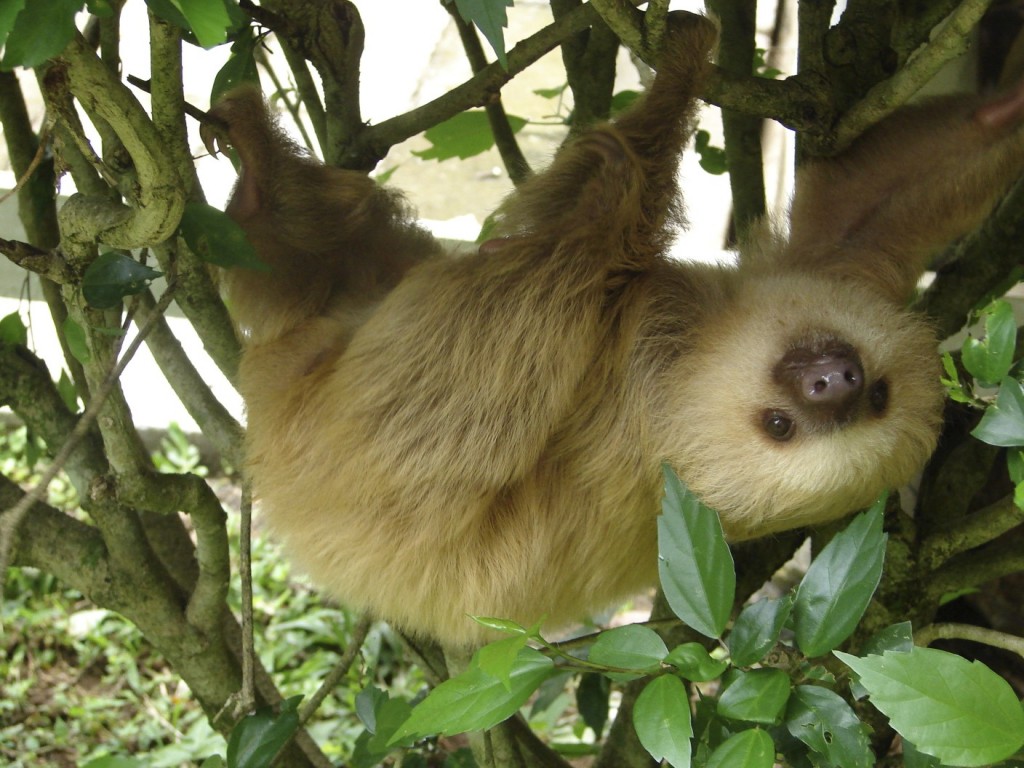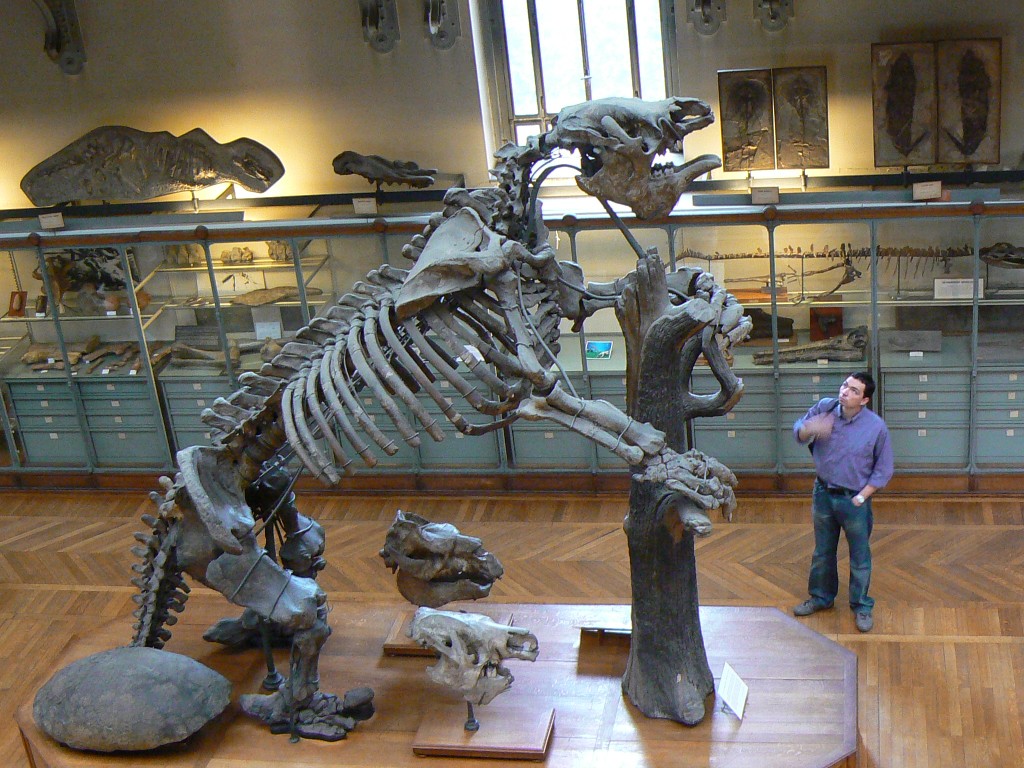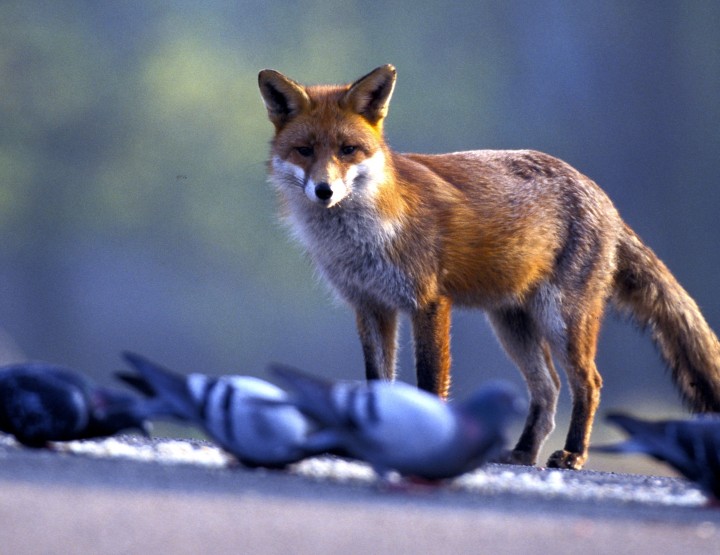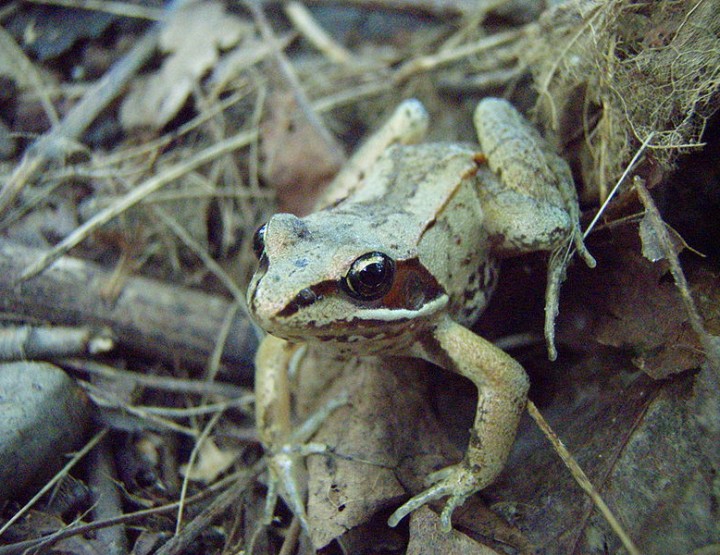Sloths belong to the species of mammals with only few teeth and are thus closely related to anteaters and armadillos. They live in the tropical rain forests of Latin America and live up to their name, because they are inactive up to 20 hours a day and busy doing nothing. And also during the rest of the day they don’t really become more active. Plus, their movements are very, very slow. They love hanging from branch or vine. When they ever fall out of rigor, muscle contractions proceed about six times slower than a cat which is moving normally. Their metabolism is supposed to be one of the slowest in the world of animals, which is partly due to the nutrient- deficient diet based on leaves. It takes up to 150 hours for the stomach to digest a meal and the walk to the toilet calls only every 6 to 8 days.
Smaller species such as the two-toed sloth can do this in the slopes, big ones such as the three-toed sloth, however, have to come down from the tree to do their business on the ground although it’s not . the habitat of these noble creatures which renders the regular pooping session more than dangerous for sloths. On the ground, sloths move in an even more inefficient way. Half of all adult animals become victims of raptors, snakes and big cats on the ground. When they hang on the trees, they are relatively safe. Because of their matted fur and their almost non-existent movements, they look like bushes and vines. But why do they crawl down from their branch in the first place to poop?
While two-toed sloths eat leaves aside from fruits and insects, it looks rather bad in the diet of their larger cousins. Therefore their fur is characterized by a more than bizarre feature: Algae grow between the hairs, which are soaked with the water of the rain forest, and serve as the sloth’s basic food resource. For the algae, sloths go to the ground to defecate. The reason: Moths live in this algae and supply the algae with nitrogen. In order to get the moth larvae, which are important for the algae cultivation, the sloth has to climb down from the tree and crawl to the same toilet over and over again, because that is where the eggs of moths can be found …. Yes, it’s a very complex circuit.
But sloths have not always been slow bags, like they are now. A while ago, in the early Holocene (8000 years ago) there were giant sloths with a length of 6m, a height of 2m and weight of 6 tons in America – the Megatherium. That one didn’t hang from trees, but roamed steppes and forests in order to find food. Some researchers think that they were active hunters, or at least scavengers. They had huge claws on the front legs and some kind of bone armor that protected them from other wild animals. The giant sloth was finally eradicated by humans and disappeared. But Indian legends tell of big creatures somewhere deep in the rain forest that could resemble the Megatherium. Expeditions are planned to find them.
And did you know that there was also a semi-aquatic species of sloths? The 3m Thalassocnus lived at the shores of America about 1.5 million years ago and fed on seaweed and algae. The extant species of sloths can still swim well. But the powerful giant mammals, such as they used to be before, are part of the past.
Copyright and source: : http://de.wikipedia.org/Thalassocnus, Megatherium and http://www.economist.com/curious-tale






